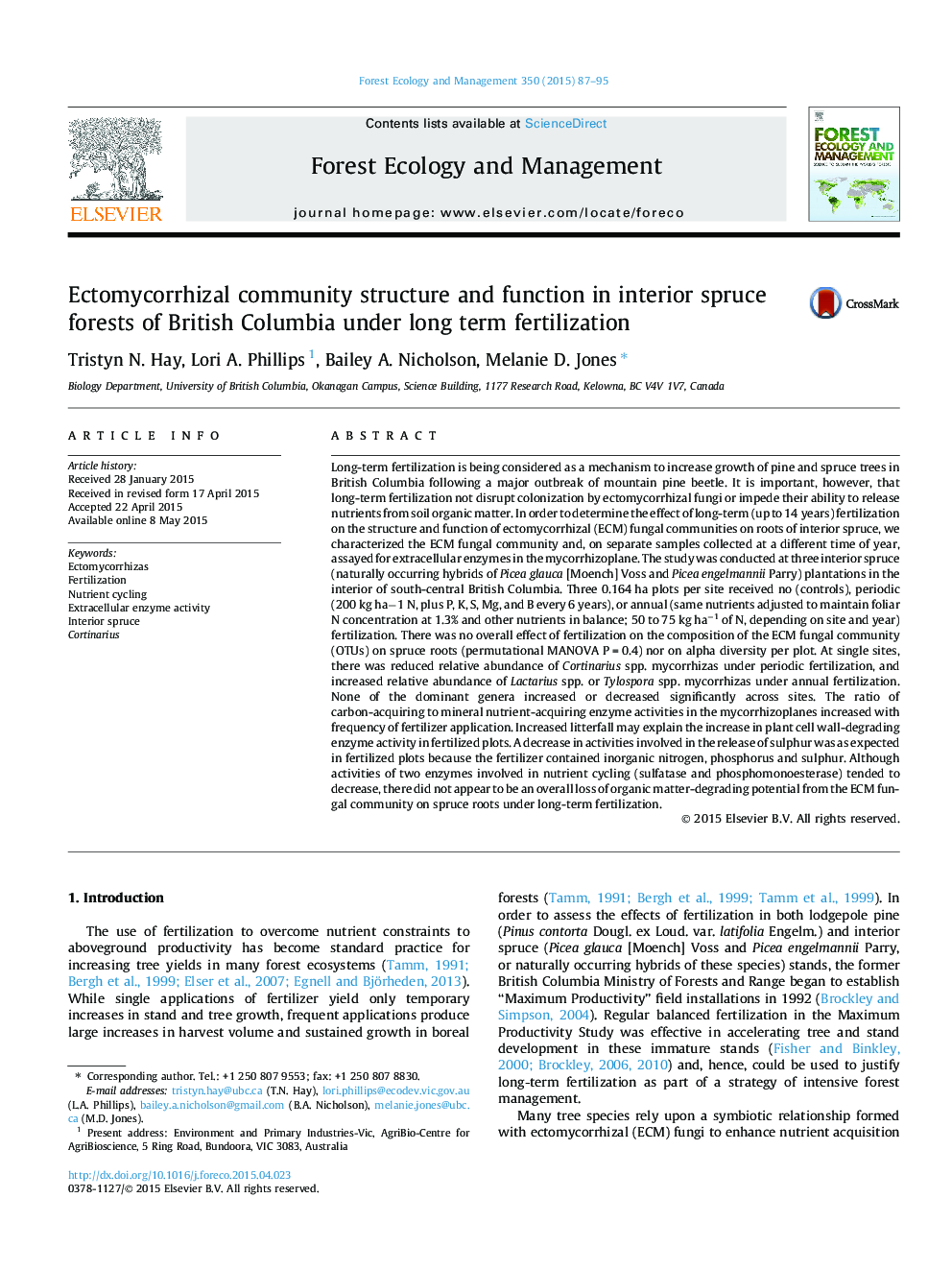| Article ID | Journal | Published Year | Pages | File Type |
|---|---|---|---|---|
| 86176 | Forest Ecology and Management | 2015 | 9 Pages |
•Effects of long-term fertilization was studied at three interior spruce plantations.•Replicate plots were untreated, fertilized every 6 years or annually for 14 years.•Fertilization did not affect ectomycorrhizal (ECM) fungal communities on tree roots.•Fertilization increased plant cell wall-degrading enzymes in mycorrhizoplanes.•Indices of potential C:N, C:P, and C:S acquisition activities were higher in fertilized plots.
Long-term fertilization is being considered as a mechanism to increase growth of pine and spruce trees in British Columbia following a major outbreak of mountain pine beetle. It is important, however, that long-term fertilization not disrupt colonization by ectomycorrhizal fungi or impede their ability to release nutrients from soil organic matter. In order to determine the effect of long-term (up to 14 years) fertilization on the structure and function of ectomycorrhizal (ECM) fungal communities on roots of interior spruce, we characterized the ECM fungal community and, on separate samples collected at a different time of year, assayed for extracellular enzymes in the mycorrhizoplane. The study was conducted at three interior spruce (naturally occurring hybrids of Picea glauca [Moench] Voss and Picea engelmannii Parry) plantations in the interior of south-central British Columbia. Three 0.164 ha plots per site received no (controls), periodic (200 kg ha−1 N, plus P, K, S, Mg, and B every 6 years), or annual (same nutrients adjusted to maintain foliar N concentration at 1.3% and other nutrients in balance; 50 to 75 kg ha−1 of N, depending on site and year) fertilization. There was no overall effect of fertilization on the composition of the ECM fungal community (OTUs) on spruce roots (permutational MANOVA P = 0.4) nor on alpha diversity per plot. At single sites, there was reduced relative abundance of Cortinarius spp. mycorrhizas under periodic fertilization, and increased relative abundance of Lactarius spp. or Tylospora spp. mycorrhizas under annual fertilization. None of the dominant genera increased or decreased significantly across sites. The ratio of carbon-acquiring to mineral nutrient-acquiring enzyme activities in the mycorrhizoplanes increased with frequency of fertilizer application. Increased litterfall may explain the increase in plant cell wall-degrading enzyme activity in fertilized plots. A decrease in activities involved in the release of sulphur was as expected in fertilized plots because the fertilizer contained inorganic nitrogen, phosphorus and sulphur. Although activities of two enzymes involved in nutrient cycling (sulfatase and phosphomonoesterase) tended to decrease, there did not appear to be an overall loss of organic matter-degrading potential from the ECM fungal community on spruce roots under long-term fertilization.
